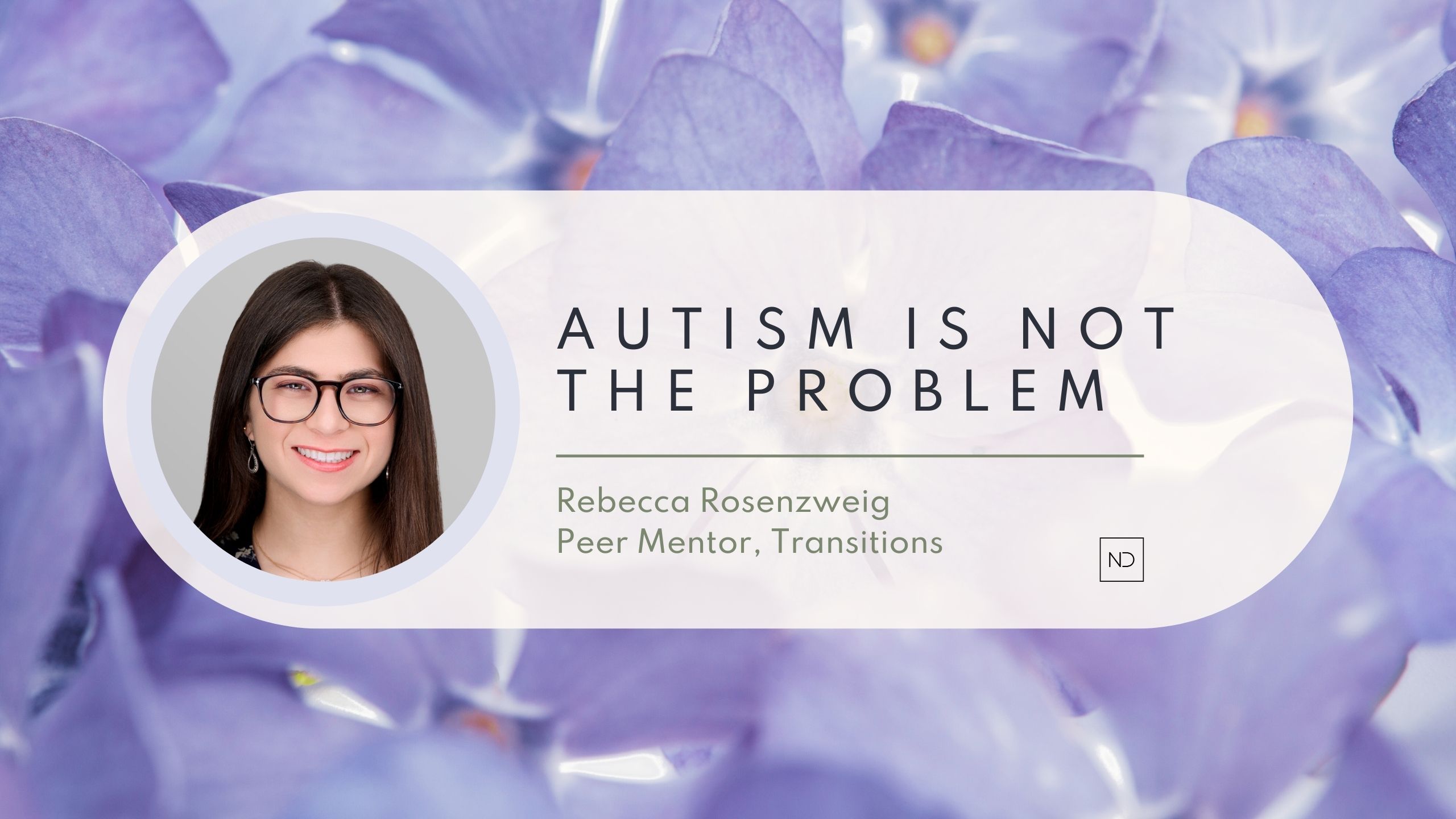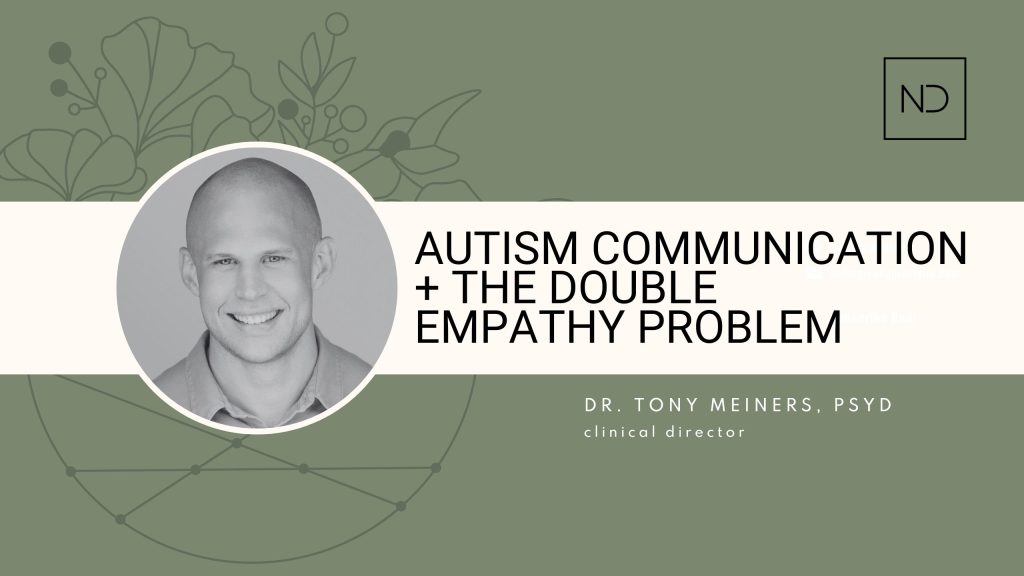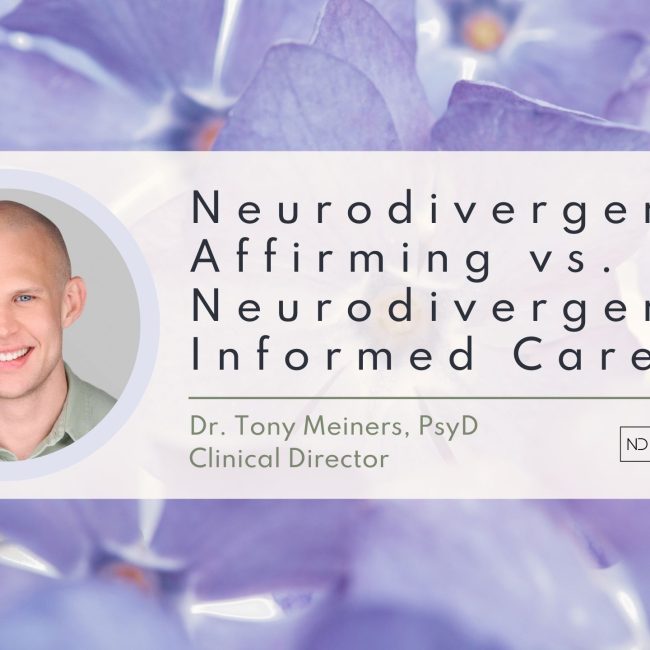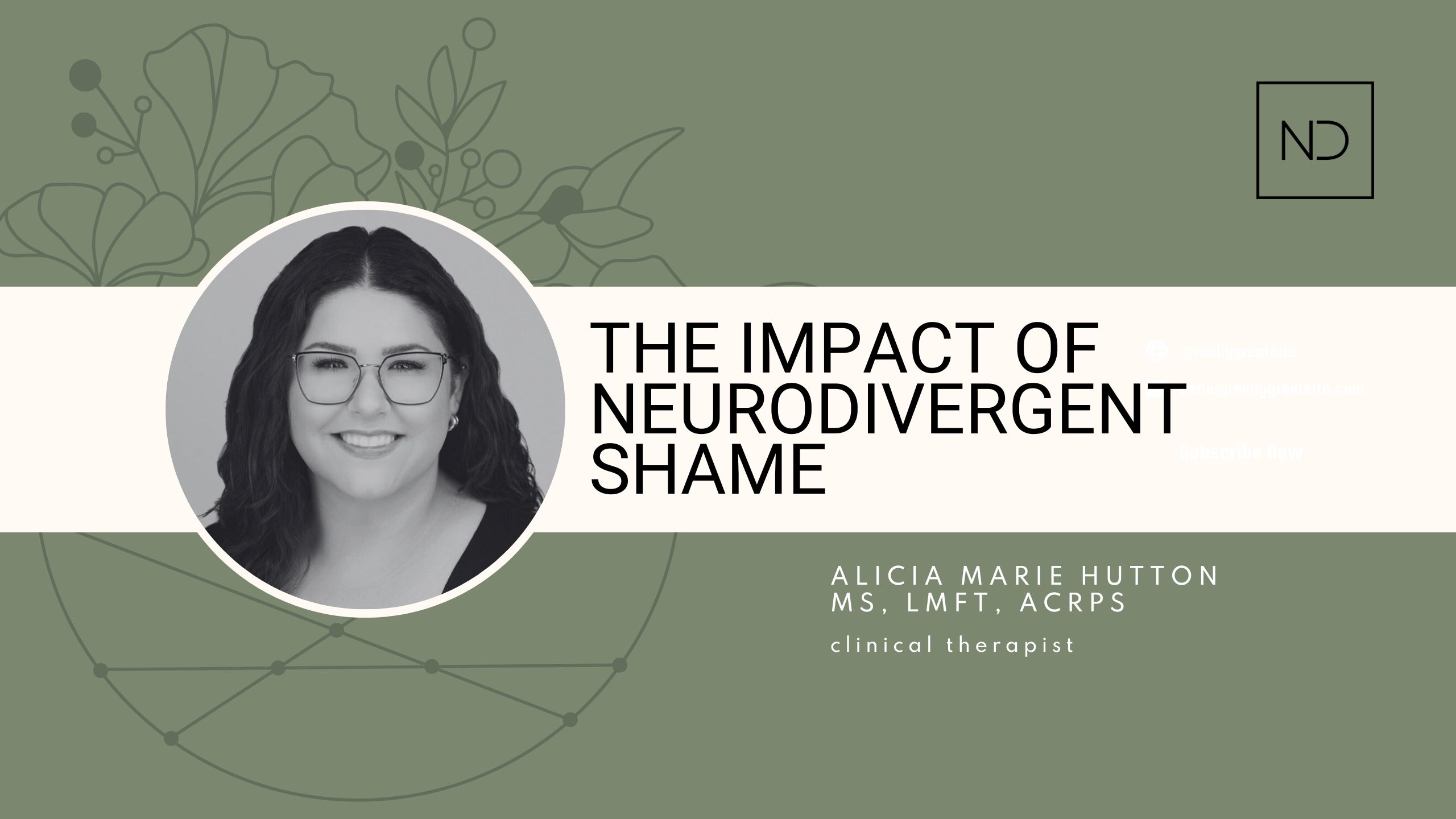
AUTISM IS NOT THE PROBLEM
Written by: Rebecca Rosenzweig, BA
Historically, autism has been blamed for the challenges autistic people face. Struggling to stay in school? Get a job? Make friends? “It’s because of the autism.” The belief is this: If autistic people are trained to behave like someone without autism, they will face fewer challenges.
In other words, if autism is the problem, then removing it is the solution.
Under this framework, if an autistic person is struggling to make friends, it is the fault of the autism. Training the autism out must be the solution. This “solution” led to interventions to attempt to extend people’s friendships and improve their probability of success in school and work. Programs all over the country use charts and data to train daily behaviors such as proper eye contact, body language, and social “rules.” Children are encouraged to practice keeping their bodies from rocking and swaying and their hands from flapping about. They are given eye contact assignments and phrases to memorize. Unfortunately, these interventions often result in unintended consequences. Under this framework, autistic children learn from school, home, and therapy that their bodies and minds are broken and the ways they exist and interact are wrong. They learn that their chances of being okay in the world are dependent upon changing who they are. This has significant emotional and psychological consequences (Kupferstein, 2018).
Autistic people have two options: we trust the outside world, or we trust ourselves.
If we take the first option and trust the messages we get from the outside world, we learn that we are all wrong. The way we eat is wrong. The way we play is wrong. The way we make friends is wrong. We must ignore our bodies, ignore our minds, and listen to the professionals and adults who know better than our intuition. We must mimic neurotypical people so that we can exist in the world the “right” way. On the outside, we may now be able to blend in better with neurotypical people. We may have mastered the eye contact patterns, kept our hands in our pockets, and speak only when expected to.
Ultimately, it feels better to focus all our energy on following the prescribed eye-contact patterns and thus miss out on the conversation and the opportunity for connection than to endure the shame that we have been taught to feel if we do not make eye contact in a neurotypical way.
While the intention is for the autism to be “trained out,” the autism instead gets “trained in.” Our autistic traits are buried deeper and deeper in our minds and bodies under layers of shame and superficial connections. We are left traveling through life as actors, masking who we are while trying to untangle the subsequent anxiety and depression (Cage & Troxell-Whitman, 2019). Unsurprisingly, masking behaviors are a predictor of suicidality in autistic adults (Cassidy et al., 2018).
LOOK BEYOND AUTISTIC EYE CONTACT
To mitigate the psychological consequences of masking, the narrative has to change. Autism is not the problem, nor is training the solution. Instead, society’s conceptualization of right and wrong is not fitting. For example, there is no universal right or wrong way to make eye contact. In fact, eye contact is seen as rude in some cultures, regardless of the presence of autism. Yet, eye contact is something that is trained in autism intervention programs all over the country. Every day, autistic youth receive messages that the way they make eye contact is wrong. Eye contact does not have to be the only way to communicate understanding. Instead, the narrative can be reframed: Some people utilize eye contact more than other people, and that is okay. This is only one of many examples in which the narrative can be reframed.
AUTISTIC VERBAL + NON-VERBAL COMMUNICATION
Another example is communication. The autism umbrella houses variety in communication that can veer off of what might feel natural to a neurotypical person. For example, some autistic people communicate through spoken language while other people use tools like tablets and letter boards to express themselves. These tools are known as Augmentative and Alternative Communication devices (AACs).
For non-speaking autistic people, AACs are a way to access a wide variety of words to communicate with others. Access to speech might be extremely limited or not possible at all. Yet, instead of providing the opportunity to communicate with alternative tools, many programs proclaim spoken language as the only way, and AACs are not a choice. Some common reasons for this are that AAC use can be slow and carry a stigma. However, perpetuating the idea that autistic people must blend in through maintaining these training programs is what is allowing the stigma to thrive. The narrative can be reframed: instead of a right and wrong way to communicate, some people may use verbal language, while others may use tablets or letter boards. Some people prefer a wide variety of metaphors, while others tend to interpret language literally. Spoken language does not have to be the best and only route for everyone.
If we shift our understanding away from right and wrong, we will give children the opportunity to take the second option: to be true to themselves. Regardless of how someone’s autism presents, believing you are broken is not helpful. Instead, we can raise autistic children to believe: “my way of playing with toys is not wrong or bad. I can listen better when I am not focusing on eye contact, and that is okay. My passions are not wrong, my communication style is not wrong. I can find other people who understand that autism is a neurotype and sometimes a disability, but autism is not a disorder. All minds have an important place in this world.”
…
Citations:
Cage, E., & Troxell-Whitman, Z. (2019). Understanding the reasons, contexts and costs of camouflaging for autistic adults. Journal of Autism and Developmental Disorders, 49(5), 1899–1911. https://doi.org/10.1007/s10803-018-03878-x
Cassidy, S., Bradley, L., Shaw, R., & Baron-Cohen, S. (2018). Risk markers for suicidality in autistic adults. Molecular Autism, 9(1). https://doi.org/10.1186/s13229-018-0226-4
Kupferstein, H. (2018). Evidence of increased PTSD symptoms in autistics exposed to applied behavior analysis. Advances in Autism, 4(1), 19–29. https://doi.org/10.1108/aia-08-2017-0016
Do you have a question?
Send us a message








